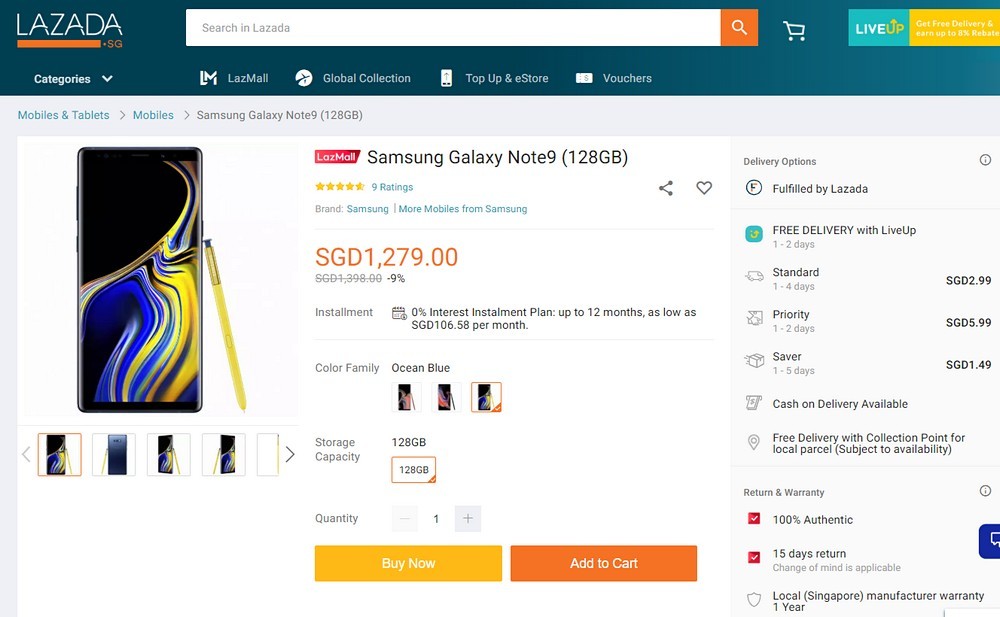I’ve been taking a hard look to see whether the current crop of recently released flagship and mid-range smartphones are good enough for me to replace the coming to 1.5 year+ Samsung S8+. What’s available on shelves here of course doesn’t approach what one would find in China, but it’s still a huge range to make decisions really hard!
This will be a long commentary, so it’s split into two parts first, with a third part probably next year once I’ve spent some extended time with the Samsung Note 9.
There were a very large number of flagship phones pushed out by the various major manufacturers in the last quarter of this year. The bunch I was looking since the last month included the Samsung Note 9, Huawei Mate 20 Pro, Huawei Mate 20 – Huawei really played mind games this time round: their two phones aren’t just differentiated by price: the cheaper model actually is in some ways better than the expensive one haha – OnePlus 6T, Oppo R17 Pro, and finally the Mi Mix 3. The iPhone XS Max looked really nice, and putting aside that my last fruit phone was 8 years ago, the Apple Tax the fruit company drops on its iPhones of today result in phones that are, for me at least, just too crazy expensive for the kind of utility I’d get out from it. I use my smartphones primarily as a communications tool and as a video recorder, with the occasional web browsing and audio on headphones – not for gaming or for multimedia playback. In any case, I’m too used to phone widgets these days – I’d be positively gimped without the Business Calendar Google Play app for instance – that as long as the iPhones don’t permit me to place and customize them on the phone desktop, those fruit phones are non-starters for me.
Deciding between the Android lot was particularly hard this year, as there was no clear lead in the bunch. I was willing to go with just Full HD resolution – the Samsung flagships offer Quad HD resolution of 1,440 X 2,960 pixels – which meant that the mid-range phones would had normally been under consideration this time round, were it not for the fact that the mid-rangers didn’t meet the 4K stabilized video requirement, which was a key inclusion I needed in my 2018 phone replacement.
Even then, for the most part, there was no one phone in the flagship list that would net me everything I wanted. Most phones in my shortlist would have something missing, and even if not, pricing was giving me pause. What’s up with flagship phones becoming more expensive each year?! The OnePlus 6T (SGD930 street) had a great price point and almost everything I want: excepting an IP68 waterproofing. Laugh if you will, but I actually occasionally wash my S8+ underneath a running tap haha. The Oppo R17 Pro (SGD999 list) didn’t do stabilized 4K footage from what I read. The Huawei Mate 20 (SGD790 street) massive 6.53″ display screen with its tear-drop design was really lovely, and I didn’t mind the additional girth and offered stabilized 4K video recording – but like the OnePlus 6T, no IP68 rating either. The Huawei Mate 20 Pro (SGD1,170 street) was in the final reckoning, even if it was coming perilously near the iPhone XS Max SGD1,500 (street) stratosphere price-tag. But there is apparently widespread screen bleeding issues with the current batch of Mate 20 Pros (a lot of users here are screaming bloody murder over it now). I’ve had fabulous experiences with the Samsung Notes – I’ve owned Notes 1, 2, 3 and 5 previously – and the new stylus now also offers significantly improved functionality. And finally, there was the Samsung S9+ (SGD880 street) which had everything: but was too similar in form to the S8+ I was coming from.
Excepting the pair of Samsungs, all these flagship phones are of the hate-it-or-love-it notch/notchless design – and I actually don’t mind it. The display notch does have its disadvantage when it comes to playing games or watching videos, but I don’t do either on my smartphones. So, of the lot, I would have probably gone with the Huawei Mate 20 – though it was a very tight call between that and the OnePlus 6T – were it not for that the Note 9’s significantly low street price suddenly made it a really viable option.
Unlike the fruit phones where resellers all seem to be following more/less the same price bracket, there’s a lot more price variation when it comes to Android smartphones. The 128GB variant of the Note 9 is widely distributed on the island: the recommended retail price listed at the large electronics stores puts it at SGD1,398. If that was the only price for the phone, I would have ended up just seriously considering the iPhone XS Max! Oddly though, the official Samsung Store on Lazada lists it for SGD1,279 (below picture) – much lower than what these stores are charging. In any case, the street price of the phone is much lower than either: and routinely less than a thousand moola. There’s about half a dozen small resellers that are really popular with phone enthusiasts, and they are charging about SGD920 for it – which was the price that I myself finally paid for it. A whopping price differential of SGD478 – that’s the price of a mid-range phone!

So, decision made: I picked up the Samsung Note 9 Ocean Blue 6GB/128GB version at a small but well-regarded phone reseller when we were shopping around the Orchard area during our anniversary staycation. As Ling quipped with amusement again: I now have a new toy to tinker around with haha.
Early impressions continue in the next post!
Recent comments